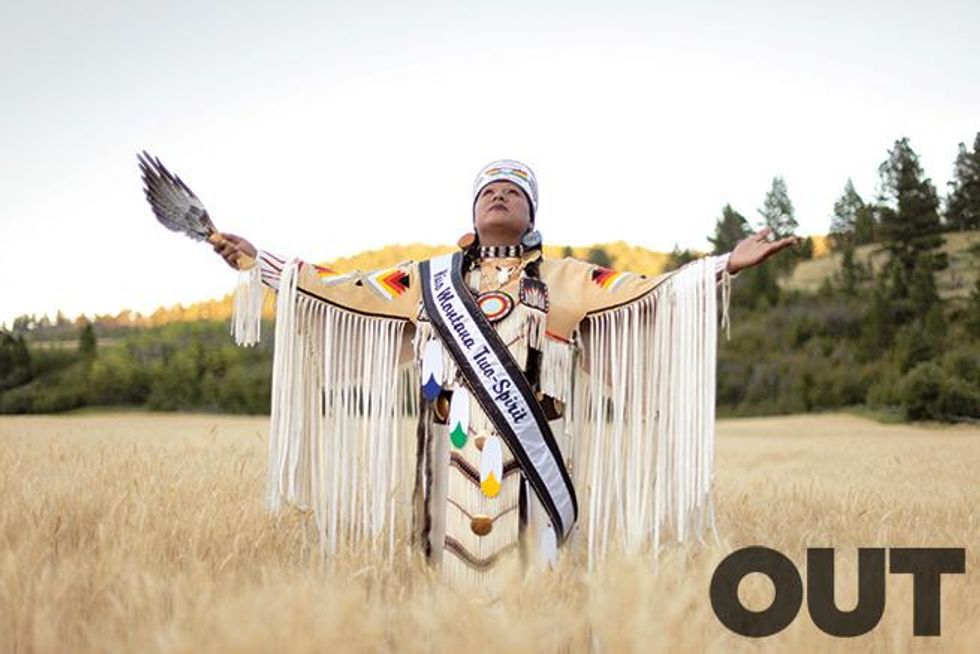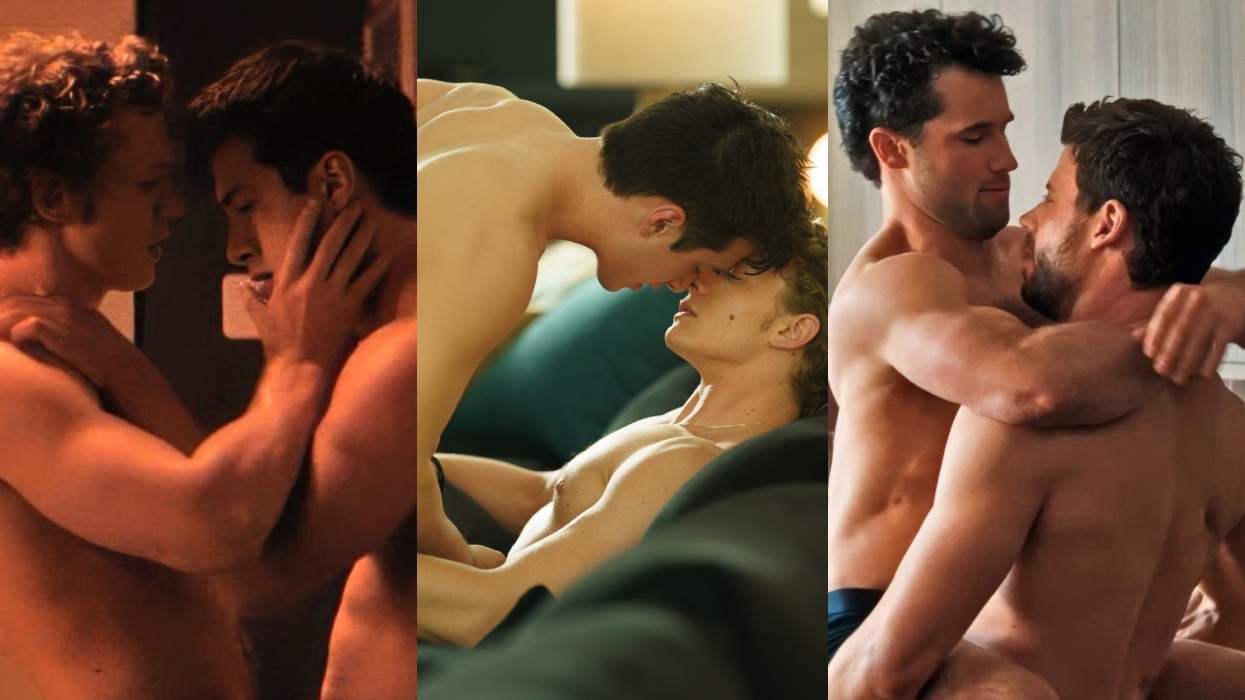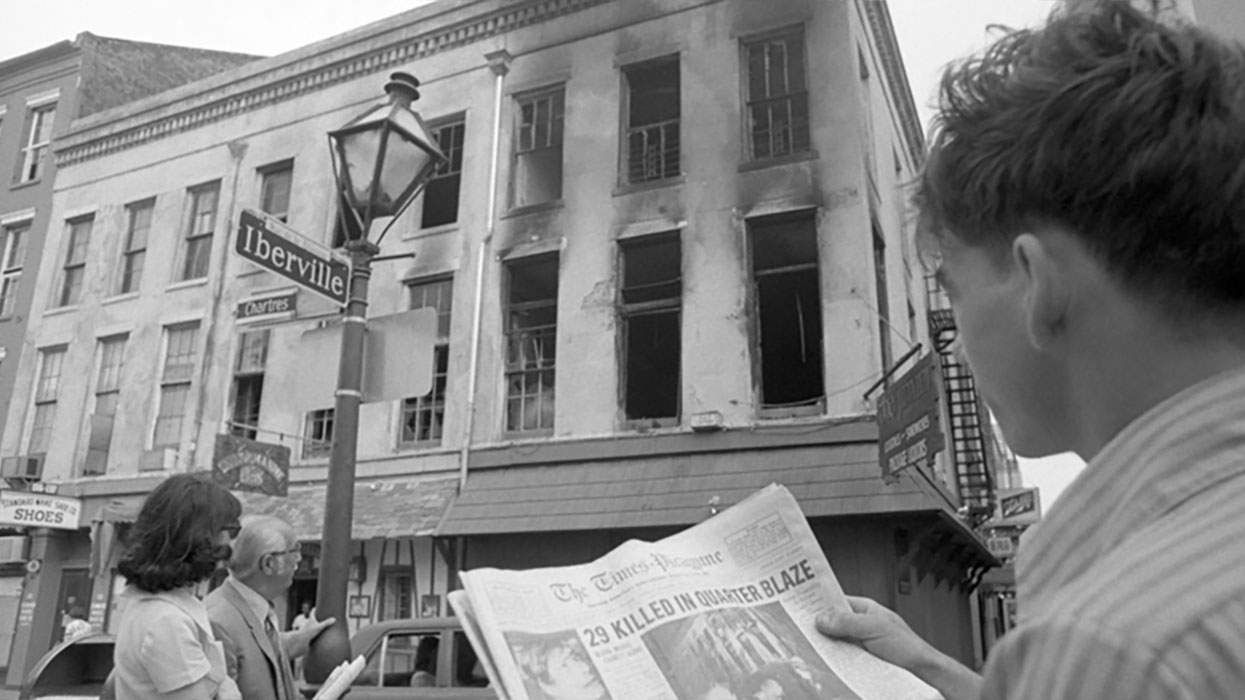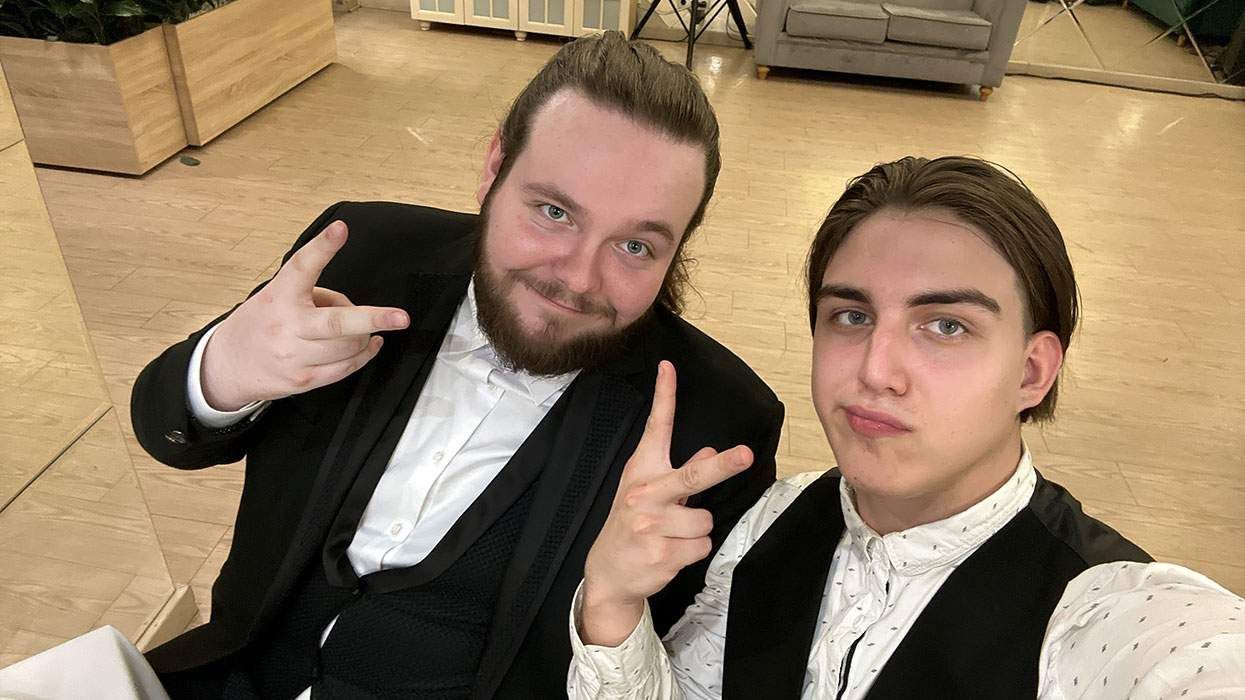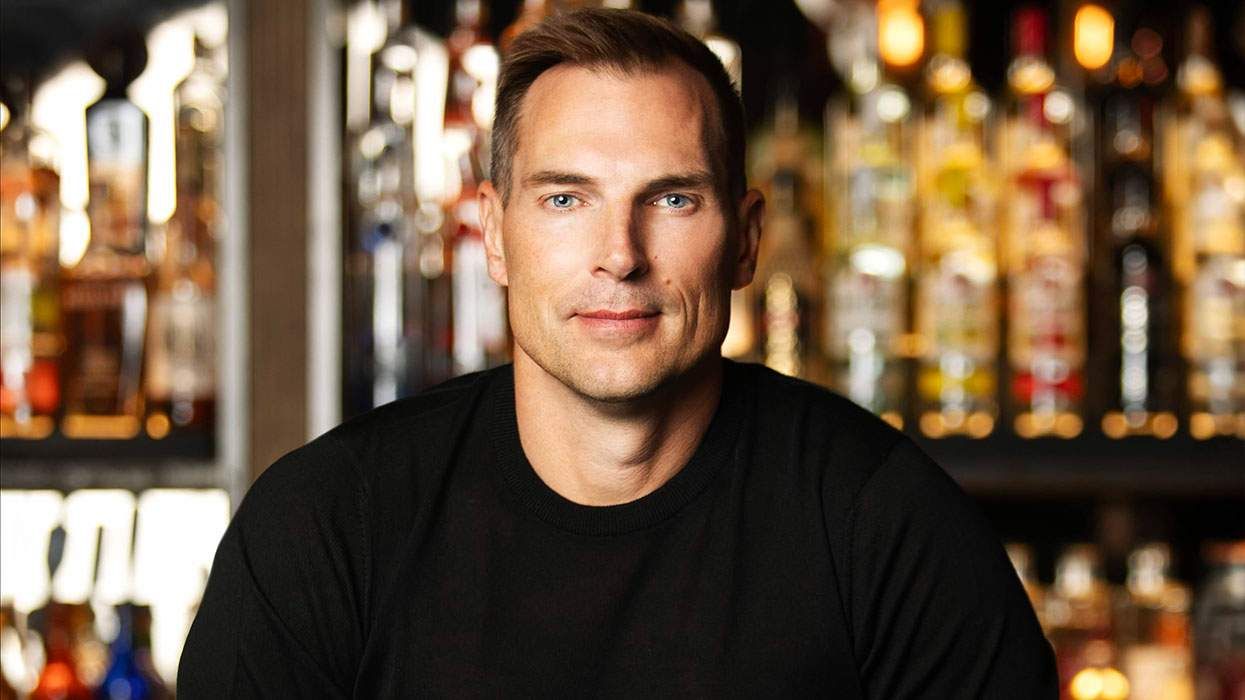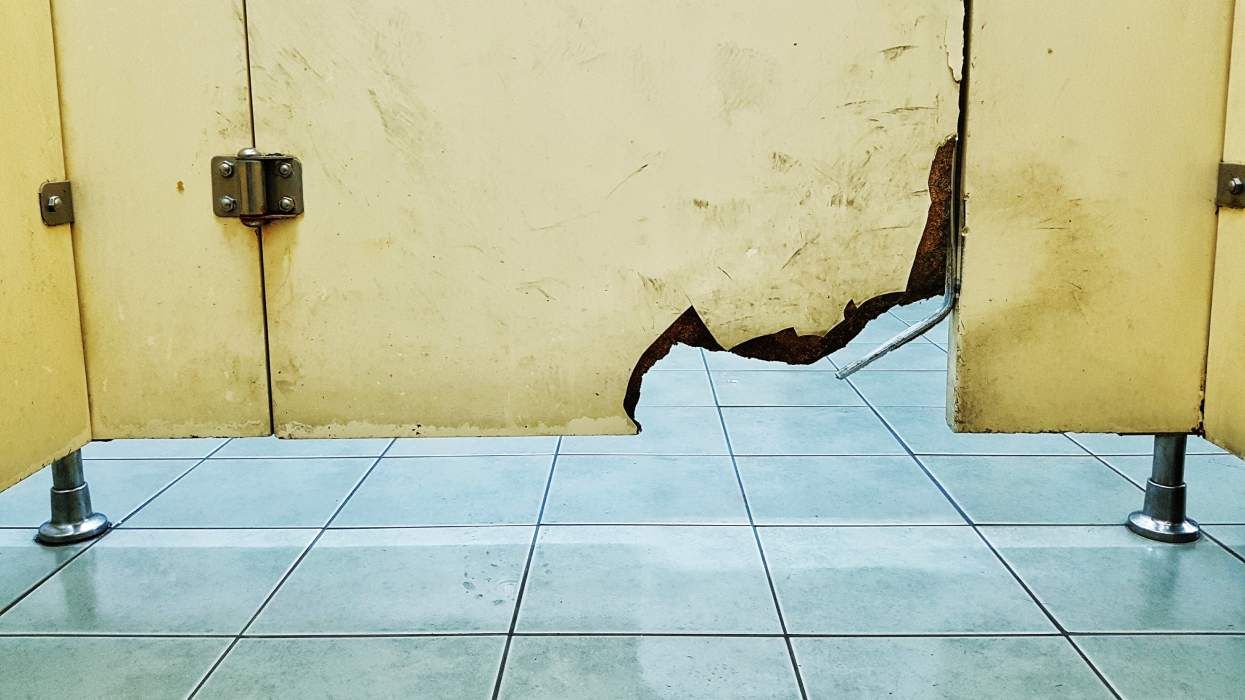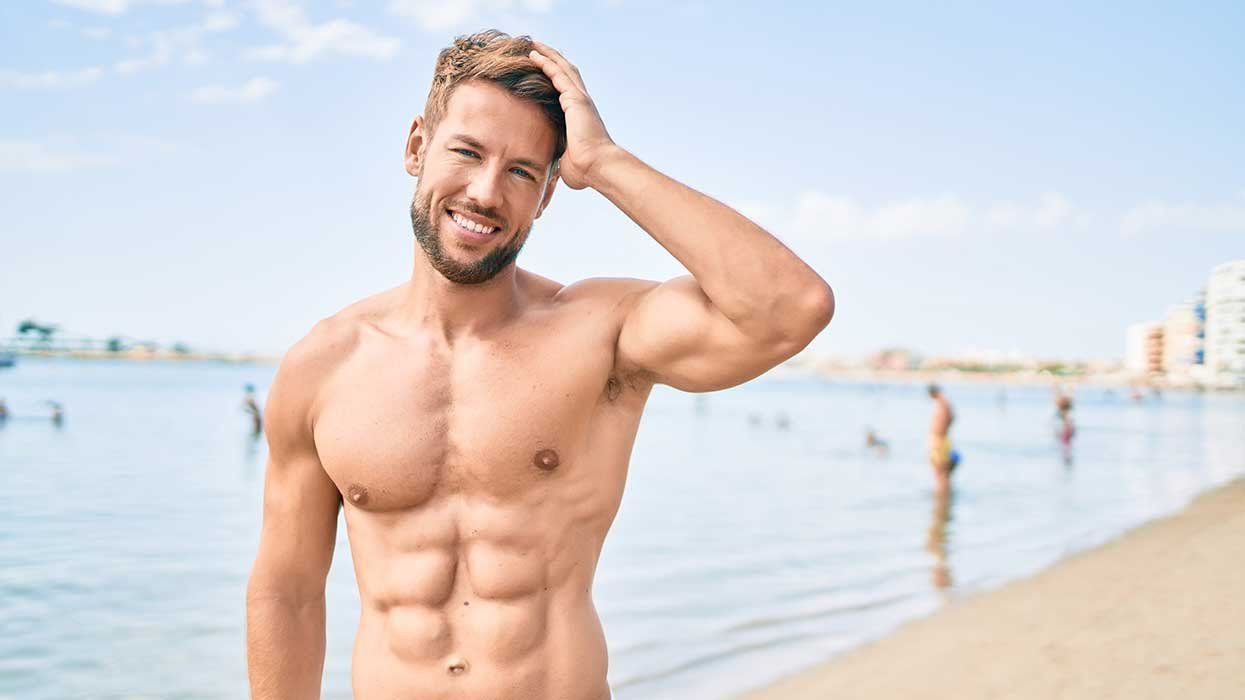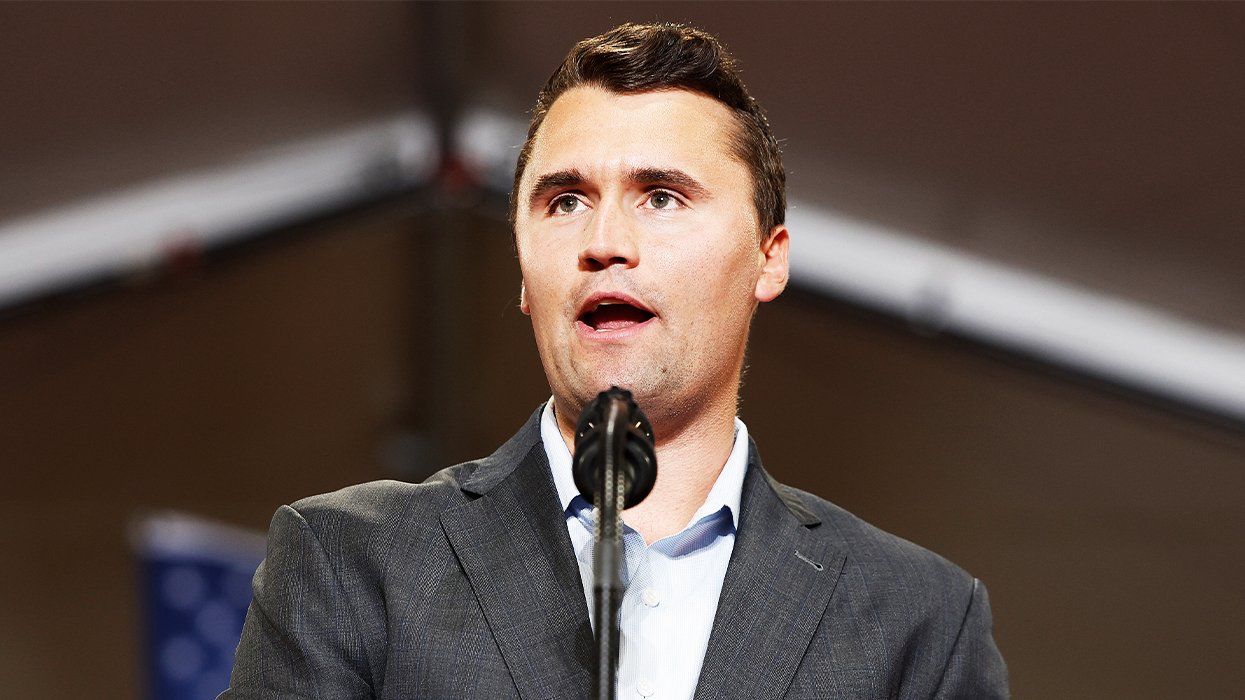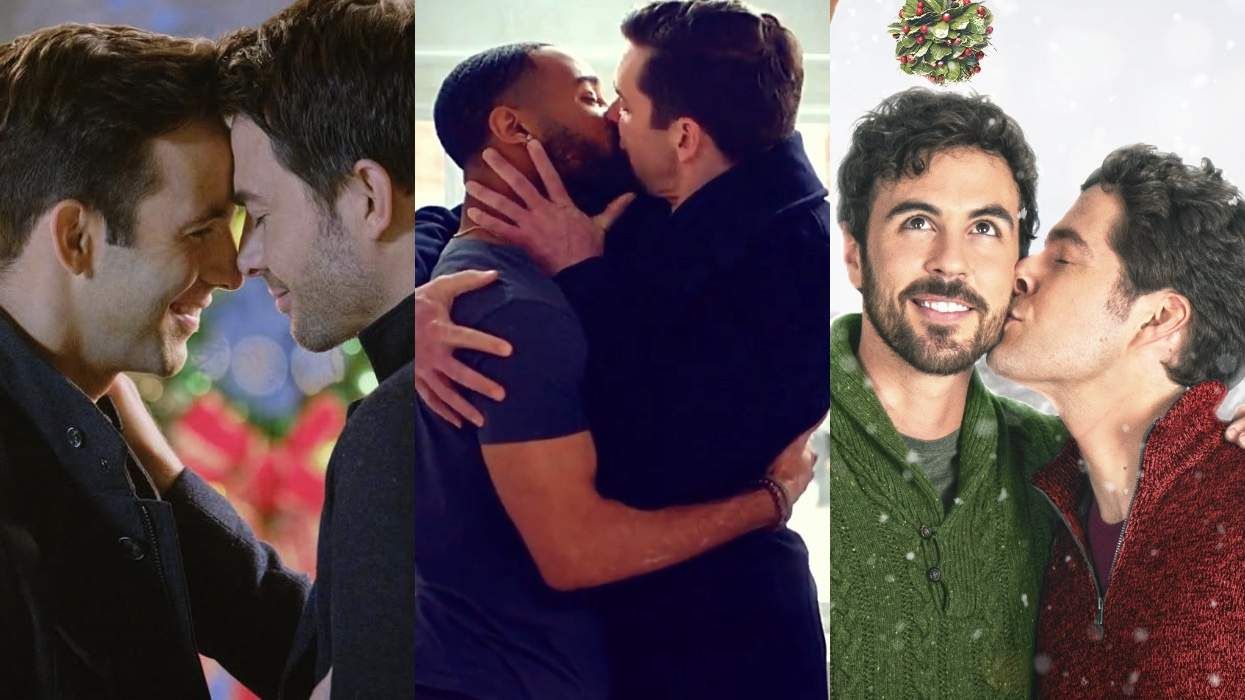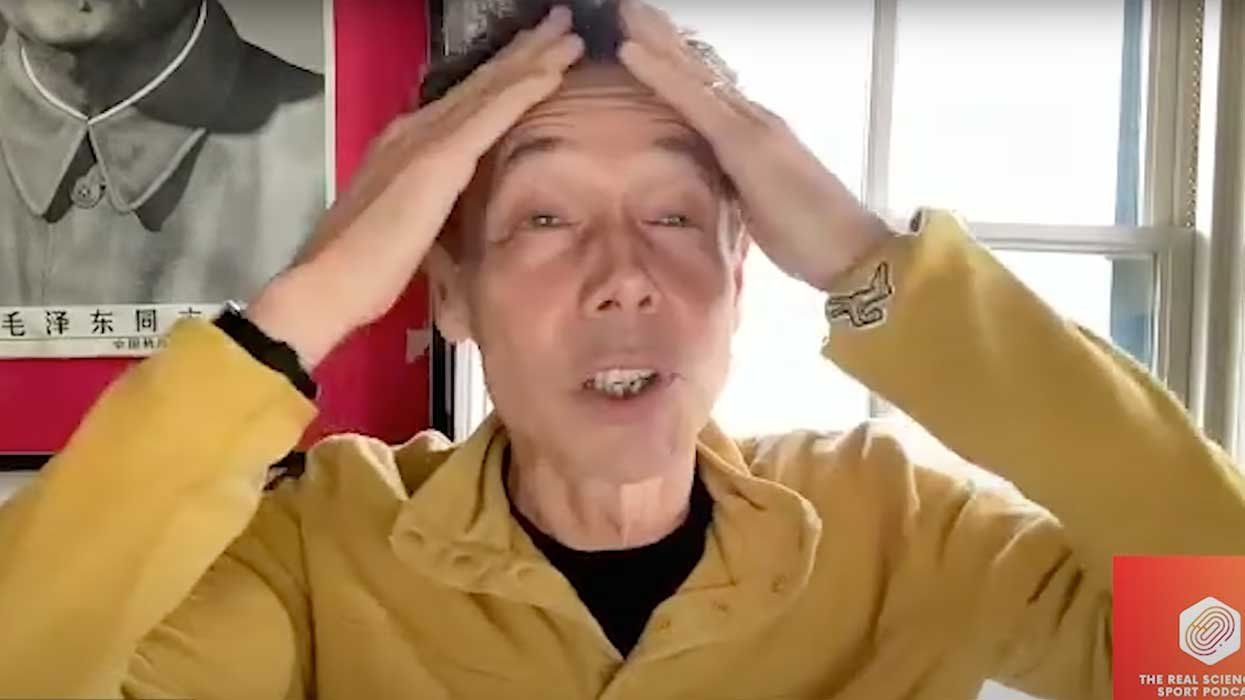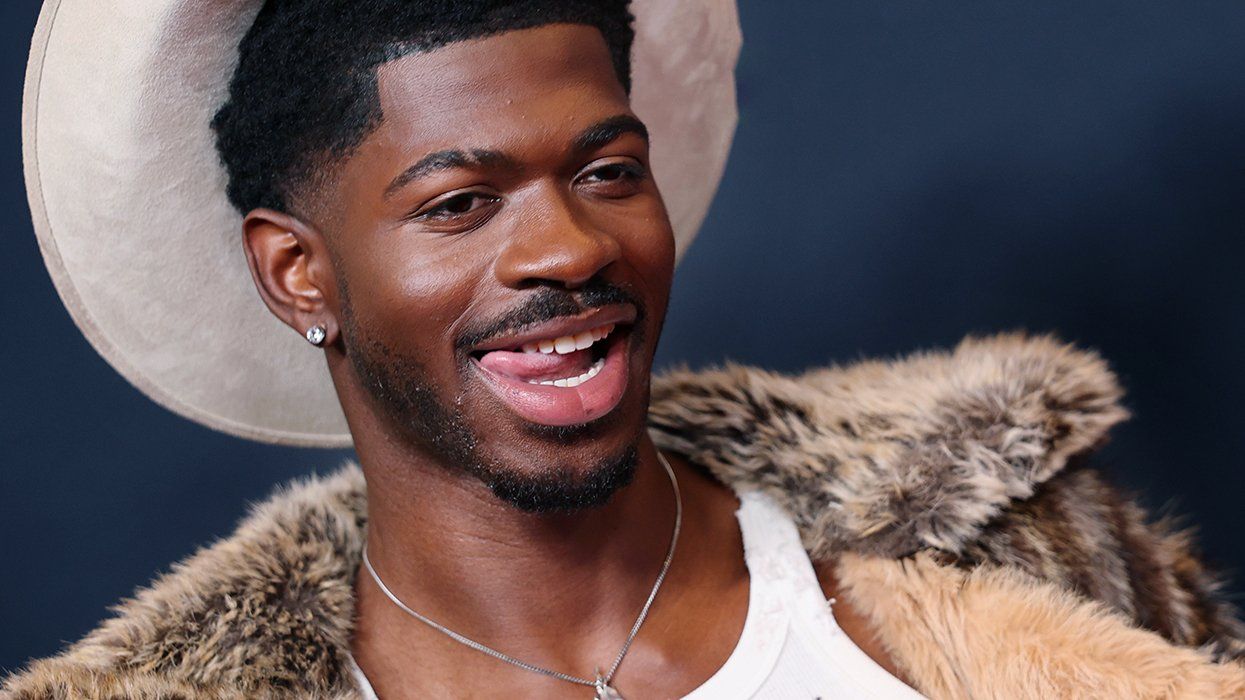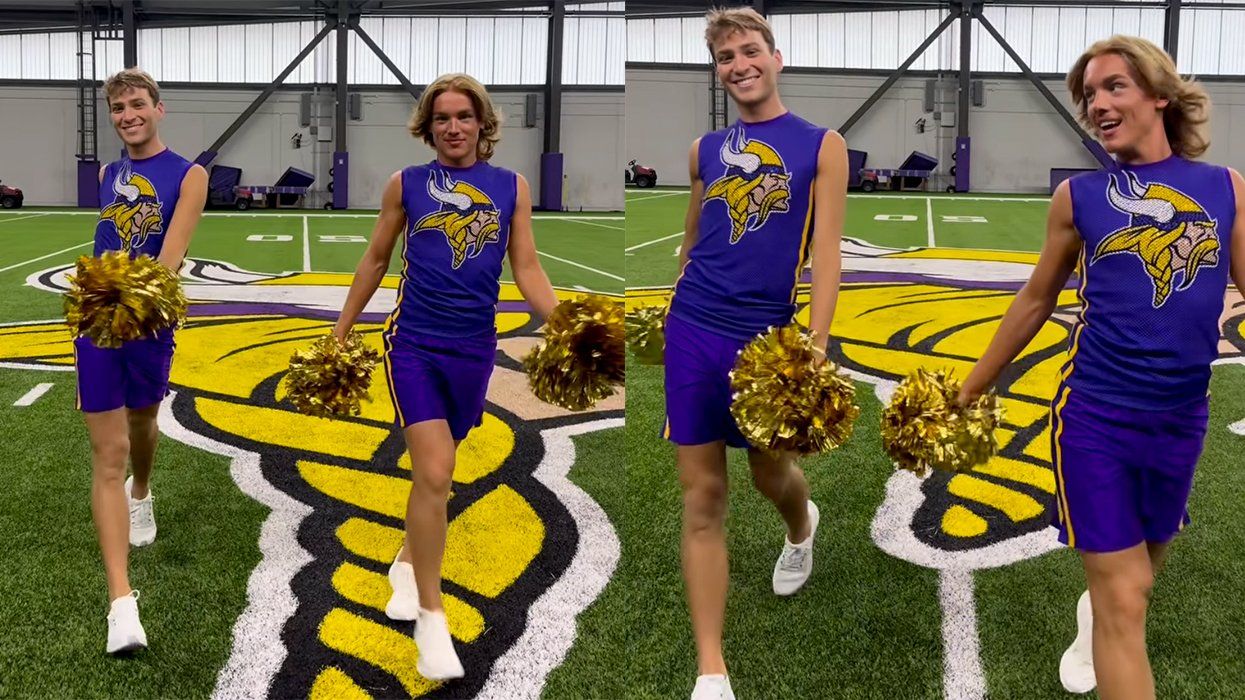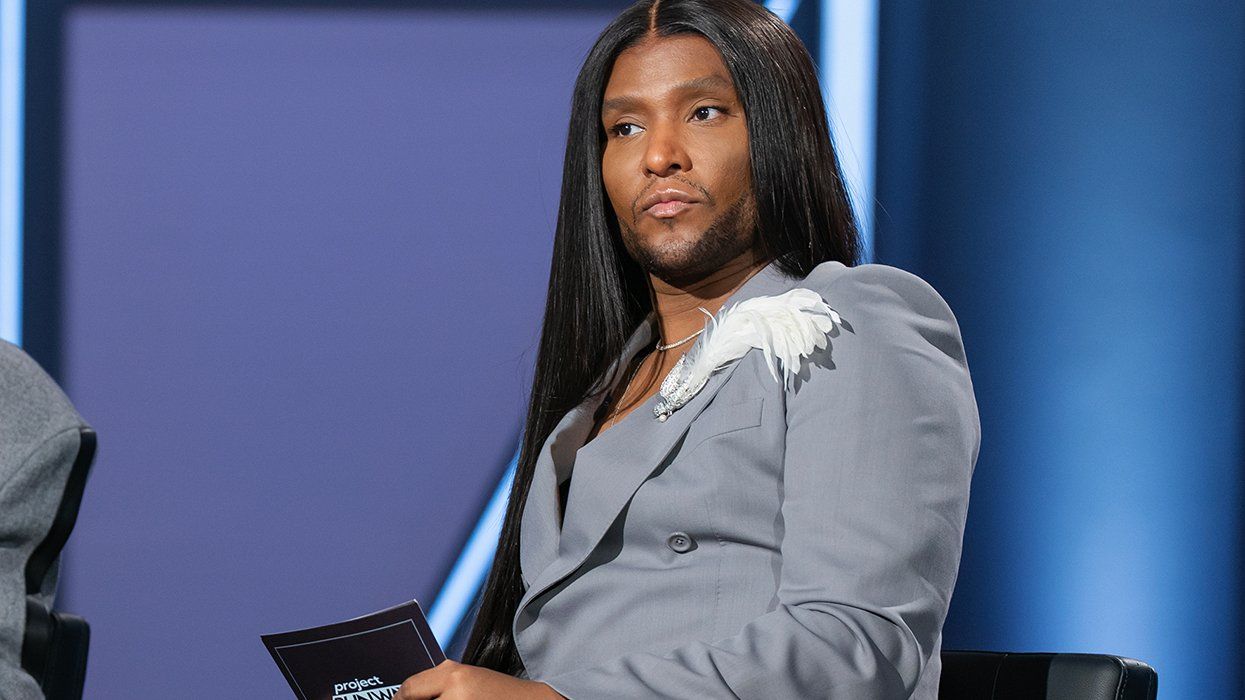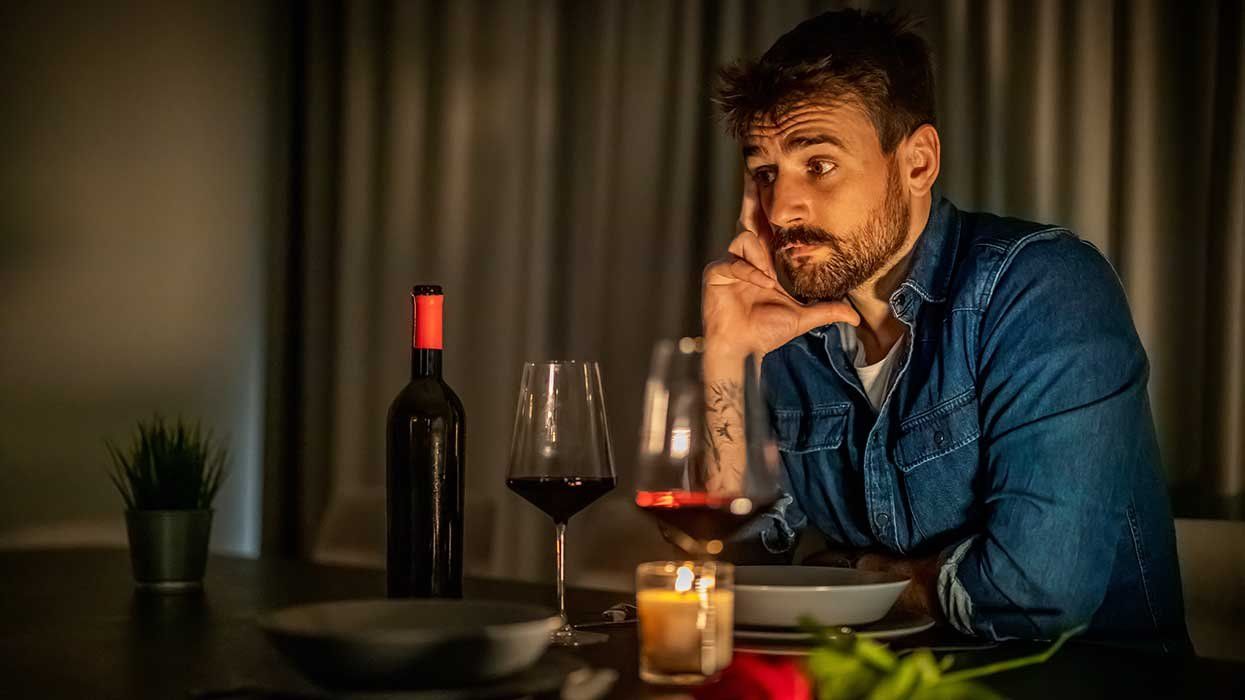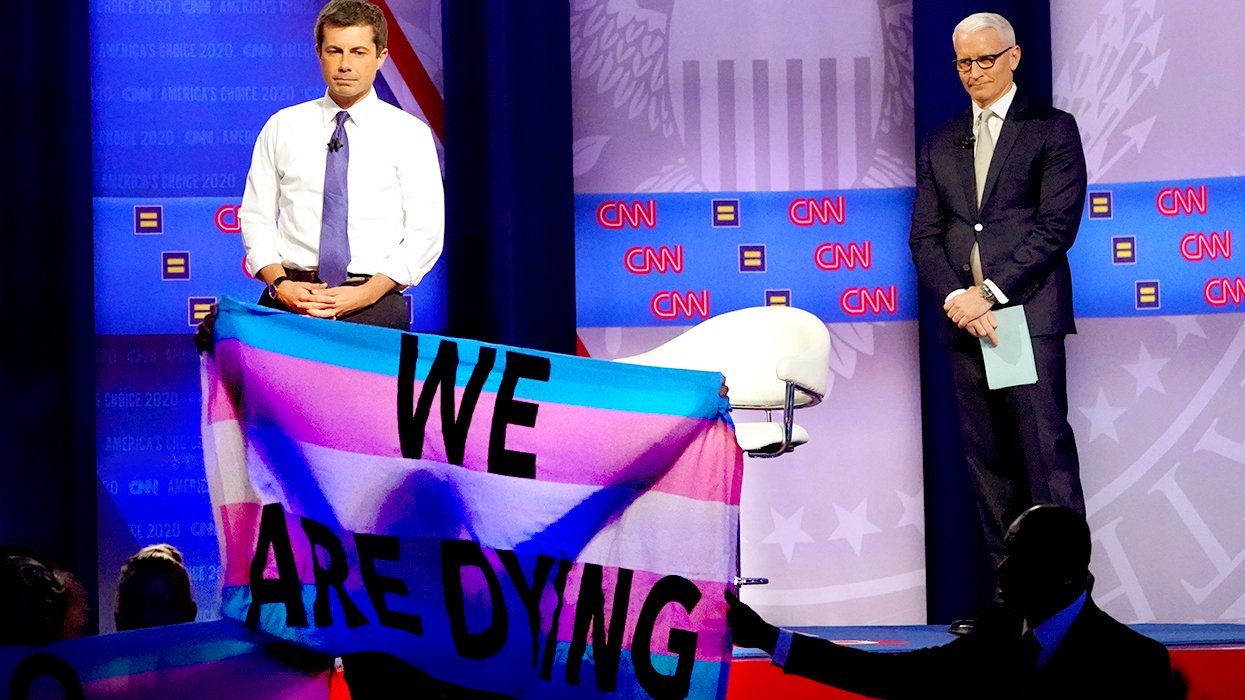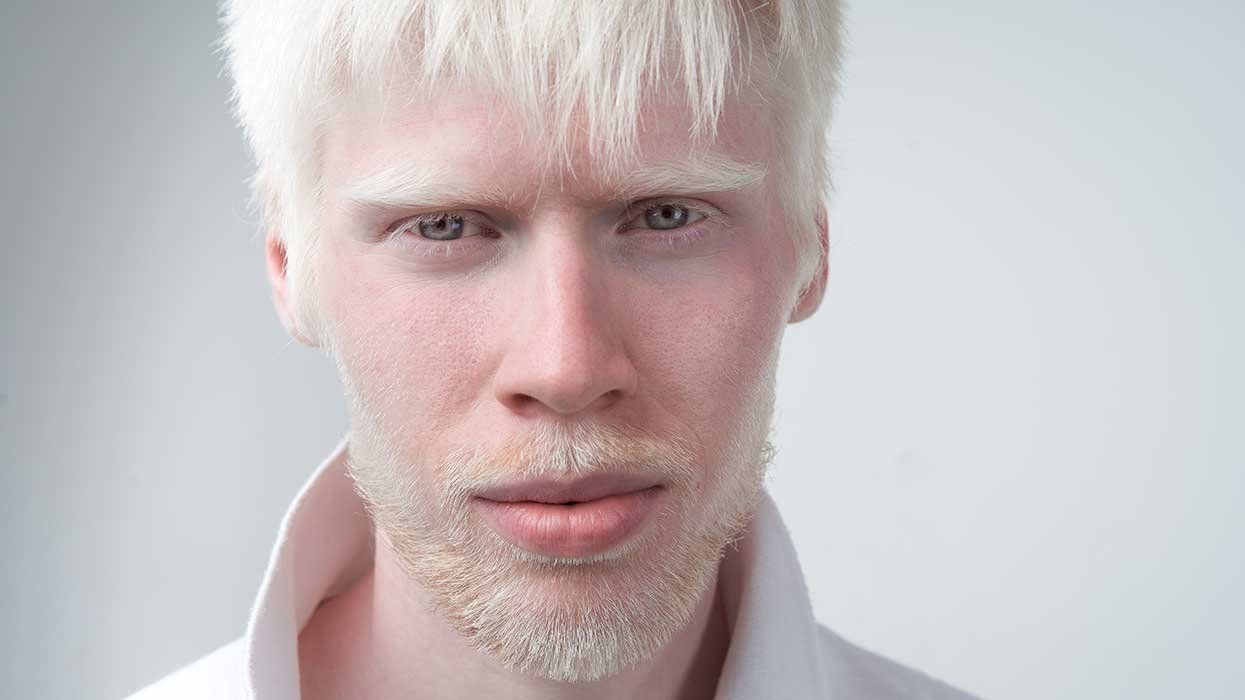In late July, Travis Goldtooth, who also goes by Buffalo Barbie, took a 900-mile road trip from her home in small, conservative Farmington, N.M., to Blacktail Ranch, a lonely homestead perched high in a valley in Wolf Creek in a part of Montana even locals refer to as the middle of nowhere. The drive from the south meanders along the eastern edge of the Continental Divide through a complex landscape that follows Montana's golden prairies racing into the Rocky Mountains. Roadside biker bars and one-horse towns rise and fall from view in the same undulation as the mountains. Seen from the distance through the thin light in the north country, some of these mountains look hellish and jagged, others fat, grassy, and long, like giant, sleeping, yellow dogs flecked with pine trees.
Goldtooth works as a server at the IHOP in Farmington. With a striking, Frida Kahlo-esque brow, flowers tied in her ponytail, and a light wash of makeup shimmering alongside traditional stone jewelry, Goldtooth has an impish spirit and elegant, jutting shoulders.
"My own kids ask me what they should call me, pronoun-wise," Goldtooth says. "And I say, whatever comes to mind first, you call me that. I feed off that. If you see me as a man, say 'he.' If you see me as a woman, say 'she.' I'm not going to tell you what to call me. It's however you see me."
At work, where she's a local celebrity, it seems all the female customers call her "sir" and all the men, "ma'am."
"I love it. And the kids love me. They always want to sit in my section to see what I'm wearing," Goldtooth says. "And the old people call me 'Sweetbread.' "
Montana remains very much a land of cowboys and Indians. Whites make up about 90% of the population, and Native Americans -- mostly Blackfeet, Chippewa Cree, Crow, Northern Cheyenne, and Flathead -- are, at just less than 7%, the state's second most visible ethnic group.
This weekend, Goldtooth is among 70 Native Americans from tribes across the continent -- from Alberta, Delaware, Georgia, Oklahoma, New Mexico, Montana, Idaho, and Washington -- who are converging for the Montana Two Spirit Society's annual gathering.
In the language of the Navajo, Goldtooth's tribe, she is called a nadleeh, from a word that refers to a constant state of change, or something with an unknown beginning and end. We're sitting in a large group beneath a pair of quaking aspen trees, and a studly woman decked out in beads, with cascading gray hair, speaks up.
SLIDESHOW | Photos of Montana Two Spirit Society Members
"The medicine wheel represents men on one side and women on the other," she says, referring to a core concept of spirituality in many native tribes, often represented in stone structures and jewelry. "But there's a space in between that is for the two spirits. We join the men and women and complete the circle. That is our place in life. That is the Creator's purpose for us."
French explorers in the 17th and 18th centuries encountered individuals whom they could not classify as either male or female and called them "berdache," a slur that refers to a "passive homosexual," or even a male prostitute. In the 19th century, the most famous -- among the white Americans anyway -- was a Zuni two spirit named We'wha. She reportedly met President Grover Cleveland, who thought We'wha was no different than any other woman.
The particulars of two spirit history are varied and obscure. Much of what is known relies on oral tradition, hearsay, and documentation from white settlers. The umbrella term "two spirit" was coined about 25 years ago in an effort to unify the tribes and raise awareness. It is estimated that of the 567 tribes recognized by the federal government (which are, at least in theory, sovereign nations within the United States) at least 150 of those tribes acknowledged something like what we now call two spirits. Each would have had their own word for these individuals or, in some cases, no word at all because they were so seamlessly part of the community.
These gender-variant individuals, which have been documented in aboriginal people in this hemisphere as far south as Chile, were often highly respected -- particularly in matrilineal societies like the Cheyenne and Navajo -- and took on roles such as foster parents, storytellers, potters, artisans, matchmakers, name-givers, and spiritual leaders.
"Natives who are over, say, 70, and not Christian are very accepting and supportive," says Wesley Thomas, a researcher at Navajo Technical University who studies the nadleeh. "The younger generations are in states of denial."
For the Navajo, the last prominent nadleeh, a medicine man and weaver named Hosteen Klah, died in 1937.
"Since then, the children have not seen a public third-gender Navajo as a role model," Thomas says.
Beneath the aspen trees, I pull up a seat next to Marlon, a handsome, middle-aged Cheyenne who lives in Idaho. Marlon is here on scholarship, and has been unemployed since 2011.
"The delineation seems to be people who live in more traditional areas and people who are more urban and Christianized," he says. "A lot of Native Americans are Christian, and they're more homophobic than people who were raised traditionally."
As a child, Marlon spent summers with his Cheyenne grandmother, who he suspects knew he was a he'eman (the Cheyenne term for "two spirit"). His grandmother was traditional, a sign that she probably managed to avoid boarding school by hiding out when the government agents came to enact a policy in the 19th and 20th centuries of sending Native American children away to receive Western educations and be Christianized. His father was an alcoholic who got sober and converted to Christianity when Marlon was 11.
"My grandmother was very wise and loving, but my dad forbid me from seeing her anymore after that because she was pagan and going to hell," he says.
The first two spirit gathering occurred in 1987, and today around 20 societies exist nationwide, hosting multiple gatherings, including in New York state, Saskatchewan, and soon Texas.
It's Friday, and after a day of craftwork, prayers, and presentations on decolonization, traditional medicine, HIV prevention, and tribal histories, the main event tonight is a drag show up on the hill. Some of the performers are staying down on the campsite, and after dinner they bathe in the stream running alongside, fixing their hair and makeup in tiny little mirrors, and soon pickup trucks packed with drag queens are kicking up dust toward the Navajo-style dwelling atop the hill. It feels very Friday-night teenage rally at the Dairy Queen in Small Town, USA.
Aiden Warrior, a Cherokee trans man living in Idaho, roars up in a shiny black mustang and revs the engine.
"Oh, that noise!" says a Cheyenne from Oklahoma. "When I was a kid, the Harleys used to roar up my street and my legs went to jelly. I was a little homo all the way back then."
"I haven't done drag in 10 years," says a Flathead in a dime-store wig, walking out of the lodge. He doesn't realize his skirt has fallen to his ankles. "I don't feel very sexy," he says.
The emcee for the drag show is Hiram Star. "I wish I could say everyone looks good tonight," he says from the stage. "But I can't see you. You're too dark. Especially the Navajos."
Everyone laughs.
"They tease each other mercilessly," Marlon says. "That's very traditional. I remember going to powwows with my grandmother and listening to the old ladies say the nastiest things and laugh and laugh!"
Leaving the drag show early, I walk through the knee-high grasses back to the main lodge beneath the full moonlight blasting into the valley like a silent-film projection. The next morning before dawn, I make my way out through a creeping fog for a prayer ceremony. This is a land of extremes, and as the sun crests the eastern peaks and slaps a clay-red light to the west, the icy morning will give way to a roasting-hot afternoon. The roosters have been crowing since 4 a.m. Darla and Raven sit cross-legged on a pair of buffalo hides with a buffalo skull altar placed at the crown of the sacred fire, and they are preparing a pipe. There is a finely woven ball of dried sage and sweet pine smoldering in a clamshell, and it is presented to each new person who wanders into the circle yawning, wrapped in a blanket, gripping a mug of coffee. This is a cleansing ritual. Participants must waft the tendril of smoke from the burning bundle over their entire bodies.
"They make fun of us for eating dogs," Darla says. "But dogs are our best friends. For us it is sacred for them to give their lives to us, like the buffalo." A tear slides down her cheek. She may be referring to jokes that Raven made onstage last night during his stand-up act dressed as his drag persona, a Native American grandmother named Annie Two Balls. It was a riff on being at the animal rescue shelter, watching all the sweet little white children gently pat the dogs while she manhandles the flesh to test its tenderness.
Each person is required to offer a prayer. Hiram Star stands over 6 feet tall, with shoulder-length black hair slicked back in a ponytail and a full face of makeup.
"I pray that certain members of the media who've been welcomed into our circle will find wisdom and not leave here furthering the trauma that, for centuries, their people have caused ours," Star says, not looking at me.
Steven Barrios, who is Hiram and Raven's uncle, runs the gathering along with David Herrera. "It's a good thing you're here, I keep telling them," he says to me later. "We need people to deliver the message."
The two, both Blackfeet, were the first to take on the issue of HIV testing and prevention on the reservation, and their gathering is now in its 19th year.
"Sometimes young people come to our gathering and they're contemplating suicide. When they realize this was part of our culture, this was part of our tradition, it really instills pride and they feel like they belong," Barrios tells me. We're seated in his cabin, and he is having his makeup done by a young two spirit named Rocky Peterson. He has two black braids framing his face and a gravelly, Harvey Fierstein of the High Plains voice. Also known as Auntie Steven, he is perhaps the most respected person here, a statuesque and benevolent figure.
"A chief sometimes had five or six wives, and one of them might be a two spirit wife, and before they went into battle they would sometimes sleep with the two spirit person because they knew that person was powerful. So many of those roles were taken away when Christianity and European culture came into our lands and said our way of believing was evil," he says.
In Blackfeet, the term for the third gender means "crossing woman," the idea relating to the act of crossing to become a woman, or weaving back and forth between genders, like shape-shifting. Barrios talks about a 19th-century warrior woman named Running Eagle who was the only known Blackfeet woman to carry a chief's name, and according to him, she had multiple wives.
Wesley Thomas is skeptical of just how sexualized two spirit people may have been in traditional culture. "Most of them were asexual because their roles had so much to do with the ceremonies -- like a Catholic priest," he says. "If you were the parent of one, you were very proud. But they didn't become sexualized until the 1940s or '50s."
The two spirit identity has infiltrated popular culture and become attractive to non-Natives. Barrios describes an incident in Florida, where he was giving a presentation on two spirit societies, when a white transgender woman approached him.
"We really like that term 'two spirits,' so we took that for our group," Barrios recalls her saying. "I said, 'This term was coined for our Native American people, and it's a shame you can't look into your own history and find a word for yourself. We have been wronged so much -- our language was taken away, our culture was taken away, our lands were stolen from us, and now you want to take our name?' " Barrios says. "Then this black guy jumped up and shouted, 'Yeah! You guys have done that to us, too!' "
Saturday night's powwow is the weekend's big event, where everyone comes dressed in their finest traditional regalia for dance and a ceremony, and Aiden Warrior and Rocky Peterson are crowned Mr. and Miss Montana Two Spirit based on performances from the show. One of the weekend's lauded accomplishments is also announced there: the renaming of the National Confederacy of Two-Spirit Organizations to the International Council of Two Spirit Societies.
"We need to open our organization to societies across Canada and Mexico because these are not our borders. Native people did not put them here," Raven says.
Earlier, before dinner, I leave Barrios's cabin, and Jake, the burly, blond ranch hand who's been making knees quiver all weekend, pulls up in a rusty Suburban.
"Who's going to the cave?" he shouts.
His bosses, Tag Rittel and Sandra Renner, run the 8,500-acre Blacktail Ranch. Rittel's a warm old fella in a Stetson and Wranglers, with glasses and a gray dust-ruffle of a mustache. At age 15, he stumbled upon a cave on the property that he's been excavating ever since. His grandfather homesteaded the property. His father, as a boy, used to duck behind his mother's skirt whenever bands of Nez Perce came through hunting buffalo, which numbered in the thousands back then. Until modern times, Native people lived almost continuously in the Blacktail cave as far back as 14,000 years ago. Rittel keeps a museum of all his findings: thousands of Clovis points -- 13,000-year-old fluted projectiles that predate arrowheads; beadwork; ceremonial altars; the remains of 48 different Ice Age animals, including large cats, musk oxen, bears, and camels (which, few realize, originated in North America); and buckets of human bones, some with knife and teeth marks on them indicating cannibalism.
SLIDESHOW | Photos of Montana Two Spirit Society Members
Seventeen of us pile into the Suburban, and Jake's yellow Lab, Trig, runs alongside us. "Just like going to town on the res, ain't it?" says Joey, a slight Cheyenne from Oklahoma with silver braids and a thick Southern twang.
It's a 20-minute drive, and Jake helps each of us into the small opening below an ancient pictogram. The limestone cave runs five miles deep. He shows us places where they found evidence of cooking fires, beds, a garbage dump, and ceremonial altars calling the buffalo. There's a bear skull next to one.
It's 41 degrees in this cave year-round, and each type of Clovis point and arrowhead found here can be traced to a different tribe, going back millennia. A thousand feet in, Jake tells us to hold on to something sturdy. "You might lose your balance when this happens," he says. "But I like to imagine what it was like for the people living here among the rocks when they didn't have light."
Jake flicks off the lights. Catcalls erupt in the pitch darkness; then silence falls. Jake asks if everyone is ready to leave, but there is no response. We linger a few minutes longer where it is
black and old.



